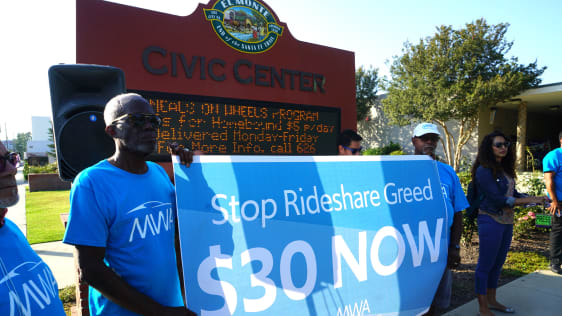Rideshare driver earnings, contractor/employee tax status, the societal impact of Transportation as a Service (TaaS)… the ‘conversations’ are far from over.
A local California city council wants to put in some new laws. Their goal: to protect rideshare drivers from corporate exploitation, and rideshare riders from unsafe riding conditions because of overtired drivers.
It’s just in the talking phase, the article’s title is misleading.
Click here to read the article.
The Council’s exploitation and safety concerns are reality. So is this one: markets vary and so does individual driver proficiency when it comes to making money.
What, where, when, how often, and how you drive a rideshare shift determines your bottom line: earnings and profit after expenses, how much money’s in your bank account. If you don’t drive smart and take every tax break you get as a business owner, you can certainly work your tail off and end up making less than minimum wage! Or worse.
That said, it is the proper role of government to protect public interests. The rideshare platform’s business model has had challenges from its inception. It’s complicated, some of the players are very powerful, and the wheels of the system grind slowly. We don’t know what Lyft’s boilerplate PR response was to the Council’s vote, but be assured that all rideshare platforms will continue to fight drivers getting employee status.
It’s been a struggle to reconcile the rideshare driver’s relationship with various vested interests from the day Uber created its rideshare platform.
At start-up, Uber needed a free, immediate fleet of drivers to create the service they were selling. The self-employed contractor model made their numbers work (very nicely, especially for some at high corporate levels).
Driving rideshare was a unique income opportunity for individuals willing to add their labor and cars to the business model: they got flexible hours, didn’t need to get hired, deal with a boss. Earnings were immediate and directly related to individual effort. It was a blessing to those who suddenly found themselves unemployed, found standard work options challenging, in need of a bit of extra income, or a way to subsidize other pursuits.
Customers embraced the new cleaner, cheaper, safer, more convenient option-that came with water and mints!
Society benefited from this new service as it supported the needs of the local public.
At social and economic levels, Uber addressed real consumer needs. Their platform created a solution that had commercial taxi interests and public transport reeling, and it still is.
It didn’t take long for tax authorities and governments to jump in with regulations, for public safety and tax income reasons. Existing relationships and laws to manage (taxis and other public conveyance) were re-visited. There was new money to make from this special class of small business owners. The insurance industry responded to the risk and opportunity as well.
So rideshare was born. It only took 10 years for TaaS to develop as a transportation paradigm shift.
Change will continue at record pace. Increasing car ownership costs and consumer lifestyle preferences will continue to support its growth. But, making rideshare drivers partner’s employees won’t happen, for three reasons:
- The companies have too much to lose.
- It isn’t a real answer to the real problem: how can average citizens, some with limited work options, contribute meaningful work in society and put a roof over their heads?
- It’s not the ‘solution’ that’s coming, which in part, is already here.
All rideshare corporations are actively preparing to convert their operations to autonomous driving cars, using fleets that they own. Today.
This isn’t something that’s going to happen 10 or 20 years from now.
FACT: Self-driving vehicles are in test, on the road, now. Fleets of them will be more profitable and easier to run than using rideshare drivers.
PLAN: In some major markets, they will be on the road by next year.
CONCLUSION: In a few short years after that, corporate-owned fleets of robotaxis will have replaced rideshare drivers.
The way we see it: rideshare driving as we know it today is a short-lived phenomenon. Expect some need for human interfaces for some time through the TaaS transition, but 10 years from now, the world will look as startlingly different as it does now, looking back 10 years ago. That was before you ran daily life from your smartphone and ‘ubered’ across town.
